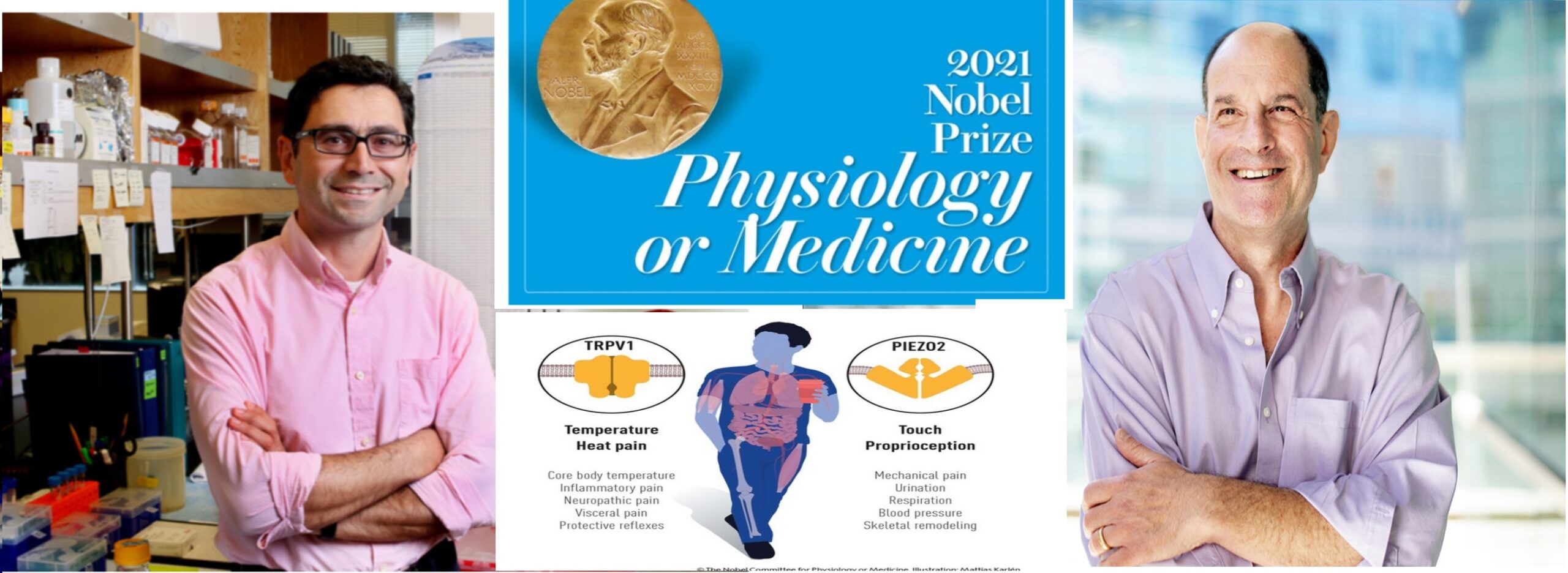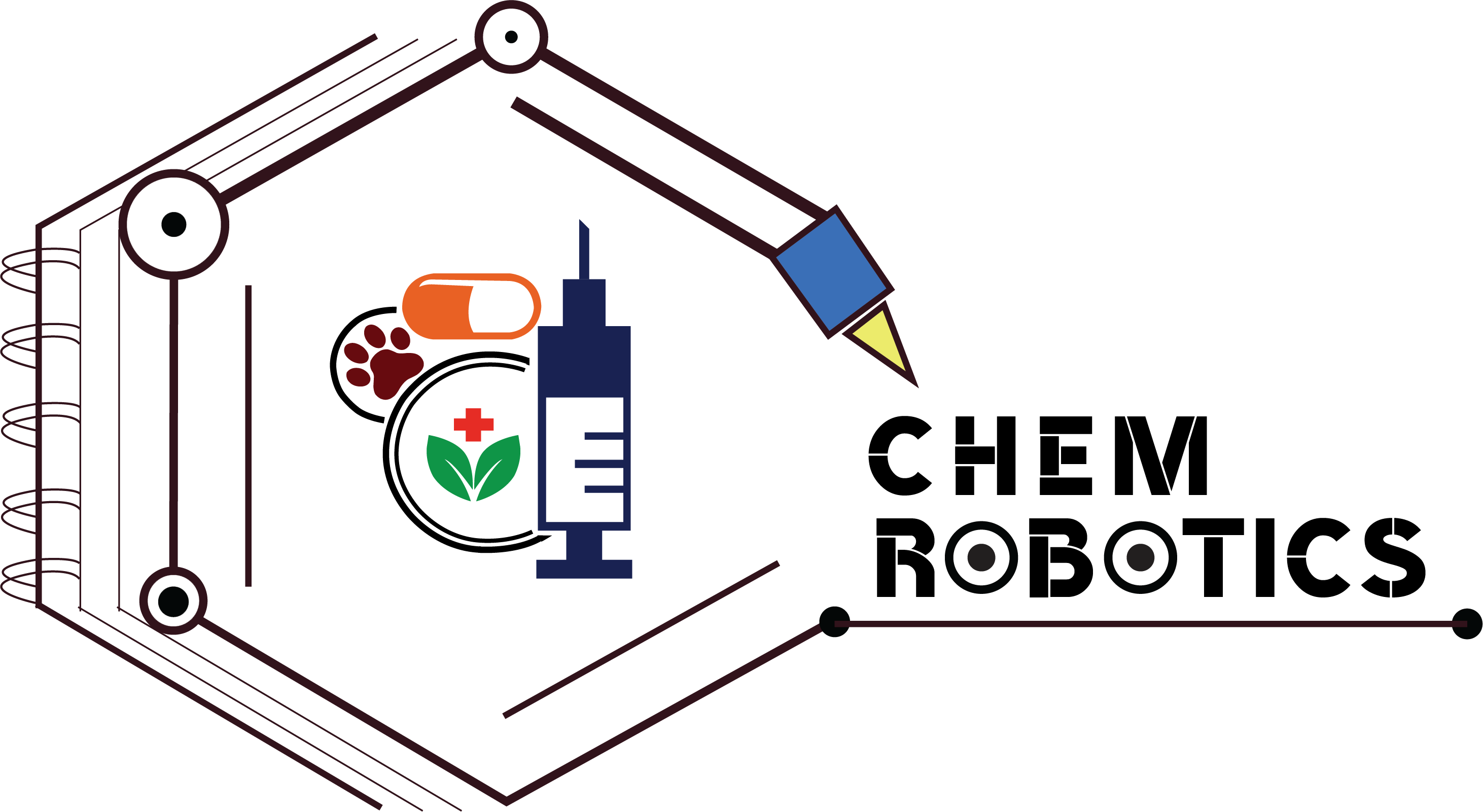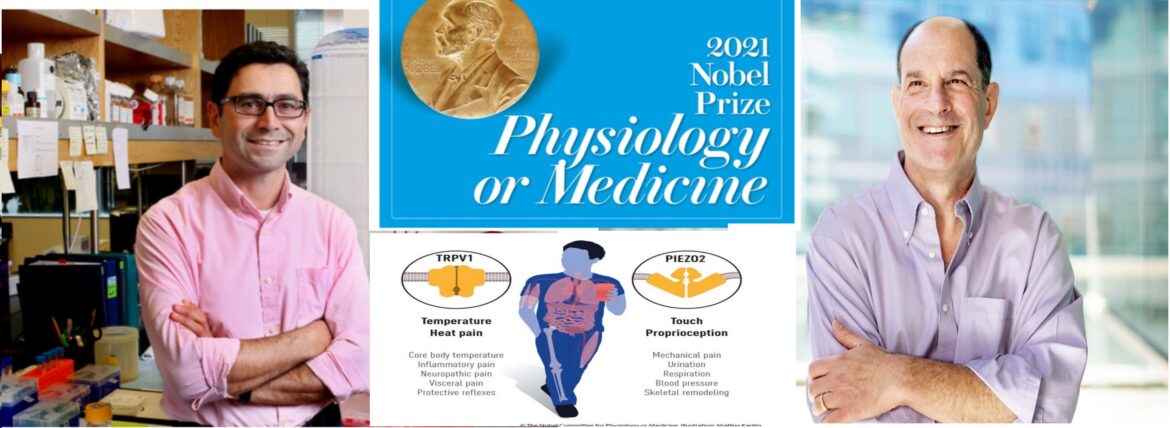The Nobel Committee has awarded this year’s prize in medicine to David Julius and Ardem Patapoutian for their discoveries of receptors for temperature and touch

Nobel prize 2021 in medicine and physiology.
The Nobel Prize in Physiology or Medicine was awarded jointly on Monday to David Julius and Ardem Patapoutian, two scientists who independently discovered key mechanisms of how people sense heat, cold, touch, and their own bodily movements.
Dr. Julius, a professor of physiology at the University of California, San Francisco, used a key ingredient in hot chili peppers to identify a protein in nerve cells that respond to uncomfortably hot temperatures.
Dr. Patapoutian, a molecular biologist at Scripps Research in La Jolla, Calif., led a team that, by poking individual cells with a tiny pipette, hit upon a receptor that responds to pressure, touch, and the positioning of body parts.
After Dr. Julius’s pivotal discovery of a heat-sensing protein in 1997, pharmaceutical companies poured billions of dollars into looking for nonopioid drugs that could dull pain by targeting the receptors. But while research is ongoing, the related treatments have so far run into huge obstacles, scientists said, and interest from drug makers has largely dried up.
In its release, nobelprize.org said: “The groundbreaking discoveries by this year’s Nobel Laureates have allowed us to understand how heat, cold and mechanical force can initiate the nerve impulses that allow us to perceive and adapt to the world around us.”
What made them accomplish The Nobel Prize?
Pain and pressure were among the last frontiers of scientists’ efforts to describe the molecular basis for sensations. The 2004 Nobel Prize in Medicine was given to work clarifying how smell worked. As far back as 1967, the prize was awarded to scientists studying vision.
But unlike smell and sight, the perceptions of pain or touch are not located in an isolated part of the body, and scientists did not even know what molecules to look for. “It’s been the last main sensory system to fall to molecular analysis,” Dr. Julius said at an online briefing on Monday.
The biggest hurdle in Dr. Julius’s work was how to comb through a library of millions of DNA fragments encoding different proteins in the sensory neurons to find the one that reacts to capsaicin, the key component in chili peppers. The solution was to introduce those genes into cells that do not normally respond to capsaicin until one was discovered that made the cells capable of reacting.
At that point, scientists in Dr. Julius’s lab knew that the receptor they had identified — TRPV1, a channel on the surface of cells activated by capsaicin — had to have evolved primarily for a more common stimulus, beyond the rare instances when someone might encounter hot peppers. That other stimulus turned out to be heated, said Dr. Michael Caterina, a professor of neurosurgery at the Johns Hopkins University School of Medicine who helped run a critical 1997 study on the topic in Dr. Julius’s lab. Acid activated the channel, too.
Tobias Rosen, an undergraduate in the lab, “came up with the clever recognition that essentially what we had cloned was a hot and sour soup receptor,” Dr. Caterina said. “It has acid, it has hot temperature, and it’s spicy.”
In search of the molecular basis for touch, Dr. Patapoutian, too, had to sift through a number of possible genes. One by one, he and his collaborators inactivated genes until they identified the single one that, when disabled, made the cells insensitive to the poke of a tiny pipette.
The channel integral to the sense of touch became known as Piezo1, after the Greek word for pressure. That channel and a similar one, both described in a 2010 paper, are now known to regulate a number of bodily functions that involve stretching, said Dr. Walter Koroshetz, the director of the N.I.H. National Institute on Neurological Disorders and Stroke, which provided funding to Dr. Julius’s and Dr. Patapoutian’s labs.
Those functions include the working of blood vessels, breathing, and sensitivity to a full bladder.
The importance and its relevance in the medical field
The identification of pain receptors prompted a flurry of interest from pharmaceutical companies: If you could block the channel identified by Dr. Julius, they reasoned, you could address chronic pain.
But there were several major problems. One is that some sensitivity to pain is useful; without it, people risk running a scalding hot bath or burning their hands on a stovetop. “Pain serves a purpose,” Dr. Caterina said.
Another is that the same channels responsive to heat also turned out to contribute to the control of body temperature. Blocking them was found to cause a slight fever — a potentially major liability.
As a result, some scientists — including Peter McNaughton, a professor of pharmacology at King’s College London — have focused on the channels’ tendency to become hypersensitive when inflammation occurs. Instead of trying to stop the channels’ normal activity, the scientists studied ways to safely block them from revving up even further in response to inflammation.
Another approach is to take advantage of the fact that repeated exposure to capsaicin makes sensory neurons less sensitive — the same reason that people who eat spicy foods develop a certain tolerance, Dr. Caterina said. Apply a prescription-strength patch with a lot of capsaicin, Dr. Caterina said, and it should deaden the pain response.
Still, difficulties remain. For example, it turned out that there were multiple heat-sensing channels. Block some, and others would compensate. “If you whack one of them, the other ones can still respond to noxious heat,” said Professor John Wood of University College London, who studies pain and touch.
The channels identified in Dr. Patapoutian’s work, Dr. Wood said, were involved in so many processes that they made for difficult drug targets.
“It’s fascinating mechanistically,” Dr. Wood said, “but I don’t think it has much clinical relevance to treating pain.”
Nobel Prize laureates
Dr. Patapoutian, who is of Armenian origin, grew up in Lebanon during the country’s long and calamitous civil war before fleeing to the United States with his brother in 1986 at age 18. Needing to establish residency in California so that he could afford college, Dr. Patapoutian worked eclectic jobs for a year, delivering pizzas and writing the weekly horoscopes for an Armenian newspaper.
At U.C.L.A., in the course of preparing to apply to medical school, he joined a research laboratory so that the professor would write him a good recommendation.
“I fell in love with doing basic research,” Dr. Patapoutian said in an interview. “That changed the trajectory of my career.”
He added: “In Lebanon, I didn’t even know about scientists as a career.”
Dr. Patapoutian said that he gravitated to studying the sense of touch and pain because those systems remained so mysterious. “When you find a field that’s not well understood,” he said, “it’s a great opportunity to dig in.”
Dr. Julius, too, became fixated on the question of how the body’s sensory receptors worked. Growing up in Brighton Beach, Brooklyn, he said that he began considering a career in science while at nearby Abraham Lincoln High School, where a former minor league baseball player turned physics teacher spoke to students about calculating the trajectory of a baseball.
“He was the person who made me think, ‘Maybe I should do science,’” Dr. Julius said.
As a graduate student at the University of California, Berkeley, and later a postdoctoral scholar at Columbia University, he said he became interested in how magic mushrooms and LSD worked, and more broadly in how things from nature interact with human receptors.
No sensory system matters more to survival than pain, he said. And hardly any was as poorly understood. So his lab began investigating the workings of a wide range of unpleasant natural substances: toxins from tarantulas and coral snakes, capsaicin from chili peppers, and the chemicals that make horseradish and wasabi so pungent.
Background
Dr. Harvey J. Alter, Michael Houghton, and Charles M. Rice received the prize for their discovery of the hepatitis C virus. The Nobel committee said the three scientists had “made possible blood tests and new medicines that have saved millions of lives.”


